How to combine tile and laminate: design tips
A few competent recommendations:
- When combined, it is better if the two coatings differ in the same direction of the masonry, thus, it is possible to achieve a smooth flow of one material into another and create a more seamless composition.
- Zigzag and jagged joints are much easier to mount with checkerboard tiles.
- In order to make the connection between the coatings look less noticeable, it is possible to use a podium. For example, in the kitchen space, you can create a floor difference between the work and dining areas.
- If a single-level masonry is used, it is important to choose the correct form of the joint, the connection in the form of a semicircle looks especially harmonious and beautiful.
- In color, it is advisable to use a combination of warm shades with warm and cold, also only with similar tones.
- For small rooms, it is better to choose a cladding in bright colors, and dark coatings should be used in more spacious rooms with high ceilings.
Read also how to choose the right laminate for quality.
Form and texture combinations
Such combinations can give the coating a brighter and more interesting look. When using this design, it is desirable that only one part of the finish is expressive, and the other acts as a background. For example, you can combine matte and glossy tiles, models of different sizes or products with a pattern, but at the same time, the laminate should have a very simple design.
Depending on the shape, the tiled products can also differ in transverse, longitudinal laying, diagonal layout, in the form of a Christmas tree or in a checkerboard pattern.
In the photo there is a multi-colored tile finish with honeycombs in combination with a laminate board in the interior of a modern kitchen.
In the case of tiled cladding with an imitation of the texture of marble stone, textiles or leather, it is better to use a laminate board of a darker shade, this will further emphasize the noble appearance of the formed plane and give the space real luxury and sophistication.
In the photo, hexagonal tiles in black in combination with a laminate in the interior of the kitchen.
Especially stylish and unusual will look hexagonal tiles, which differ in a wide variety of shades and structure. With the help of products in the form of honeycombs or rhombuses, you can achieve quite original and non-standard compositions, unusual effects and an almost seamless surface. In addition, such a finish provides an interesting zoning of the room and creates a unique broken transition with a laminate.
Color combinations
When choosing a color combination, it is important to consider what kind of atmosphere is supposed to be created in the room. For example, for a laconic interior, they often prefer tiles and laminate boards, which have the same key in warm or cold colors.
See also recommendations for choosing the color of grout for joints.
In the photo there is a kitchen combined with a living room with a tiled floor combined with a laminate of the same color.
The gray laminate perfectly complements the bright tiled finish, which against the background of this monochrome shade, looks more muted and at the same time expressive. For gray floor tiles, a laminate board in dark colors or with a pattern in which there are gray patches is preferred.
For an unusual and memorable design, contrasting tint combinations of two colors are selected, not only for flooring, but even for skirting boards. A very interesting design technique in order to smooth the decor of the interior is a combination of white and beige finishes, which somewhat brightens the dark areas of the room, and in the case of a curved joint, gives it special softness.
In the photo there is a contrasting combination of tiled cladding with laminate in the interior of the kitchen-living room.
Combined flooring in the hallway of tiles and laminate
For the hallway, quite often apply a similar finishing option. Basically, with the help of tiles, lay the floor near the front door, and the rest of the space is faced with a laminate, thereby zoning the room. In this combination, it is especially important that the tile material for the area near the door is particularly strong and resistant to moisture.
The combination of two floor coverings may have a docking of the most various straight, curved or rounded shapes. The connection can be thresholdless or with a border, which is relevant when the materials are located at different heights or are joined differently.
In the photo the interior of the hallway with a combination of black square tiles with a brown laminate.
In the corridor, the tiled cladding should preferably be matte, since the presence of scratches and scuffs is less noticeable on it. For a small hallway, it is better to use not too large modules with a minimum number of ornaments, so that the coating does not create a feeling of bulkiness.
In the photo there is a white hexagonal tile finish turning into a laminate in the interior of the corridor.
Tile and laminate kitchen floor design
Such a combination of facing materials is a very successful and practical solution, thanks to which it is possible to achieve visual zoning of the space. In this case, the tile finish is used in the working area near the kitchen, and the laminate in the dining room. A tile with a glossy surface, in combination with a cozy wooden coating, will give the atmosphere a special atmosphere and form a balanced design.
In the photo there is a kitchen-living room with zoning made by combining light tiles with a dark laminate board.
It turns out to achieve no less interesting visual separation of the room in a more spacious studio or in a small kitchen combined with a living room, in which, using an interesting combination of materials, you can create several visual zones at once.
The joining of two floor materials in the kitchen can be performed either in a straight line or in the form of a wave, a curved or broken line. For example, for a kitchen interior with a predominance of strict geometric shapes, it is better if the seam is straight, and if the design is distinguished by wavy transitions or furniture with smooth corners, a curved connection is appropriate.
In the photo there is a light floor tile in contrasting combination with a dark laminate in the kitchen interior.
Combination ideas in various interior styles
In the style of minimalism, a more restrained finish with rather modest and laconic color schemes, in gray, black or white colors, for high-tech direction, a combination of glossy ceramic tiles with a laminate board of dark gray, black, anthracite or shade of wenge is supposed.
The Scandinavian design can be decorated with light tiled finishes or models with imitation wood, stone or marble, which, in combination with a beige, white, limestone or ivory laminate, will differ in their original and natural look.
In the photo there is a Scandinavian-style entrance hall with a floor lined with patterned hexagonal tiles in combination with a beige-colored laminate board.
In a country country, a laminate canvas of walnut, ginger, saturated brown or beige color is often used in combination with multi-colored mosaic or patterned ceramics in the patchwork style, and for an industrial loft, a laminate having a shabby and aged look in combination with a dark tiled cladding or products imitating brick.
In the photo there is a floor with a laminate in combination with patchwork tiles, laid out in the center in the interior of the country-style kitchen.
Photo gallery
The combination of tile and laminate is a fairly relevant and popular design solution that can give the room a new image and a very stylish design.


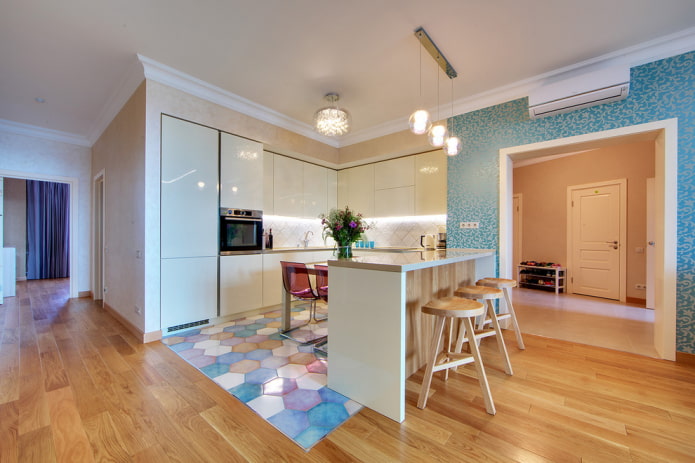
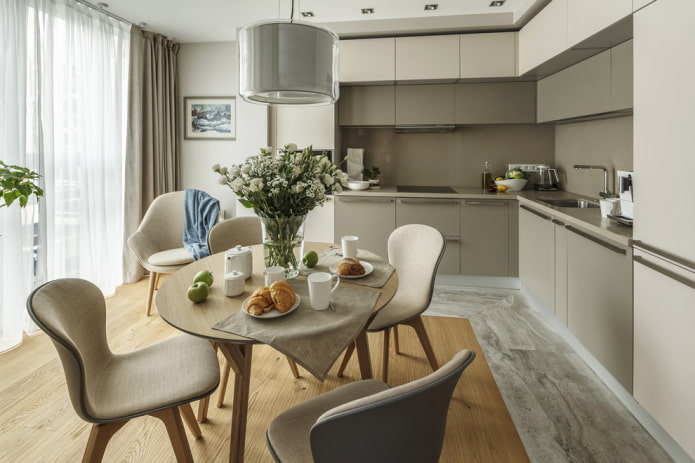
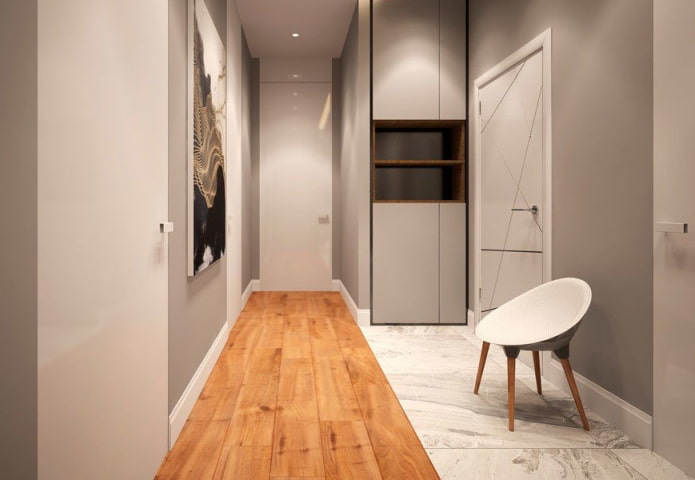

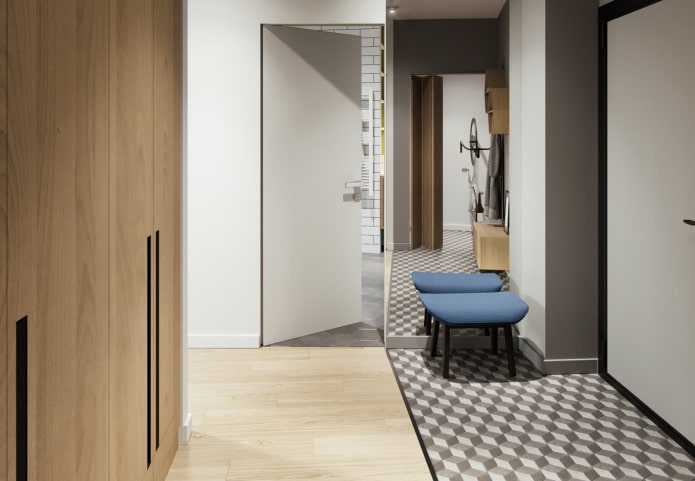
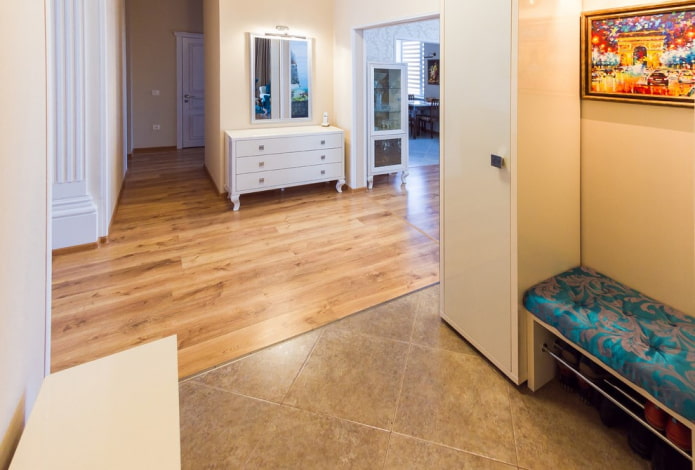

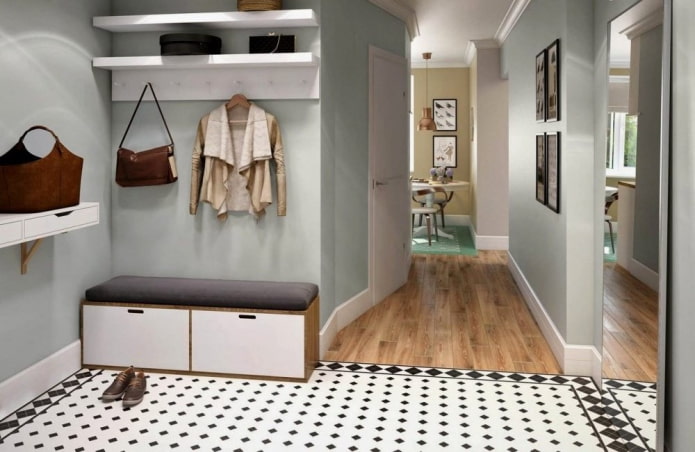
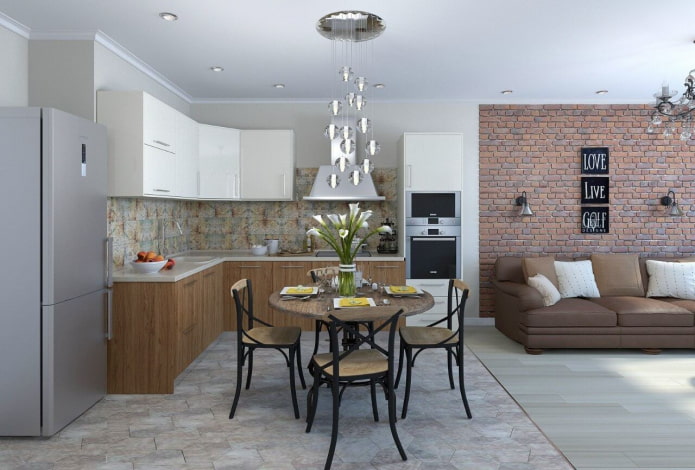
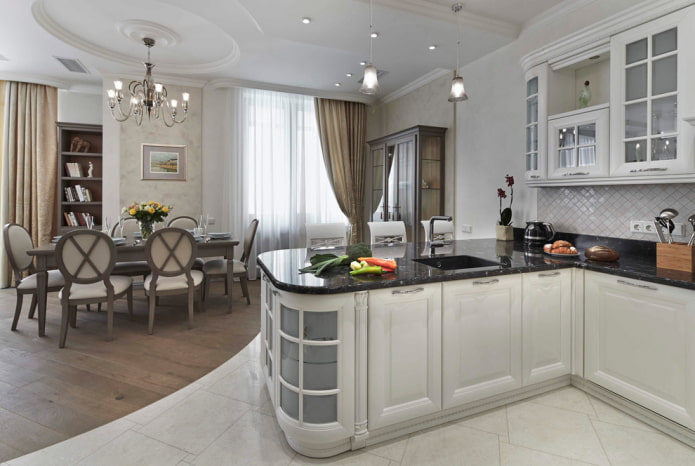
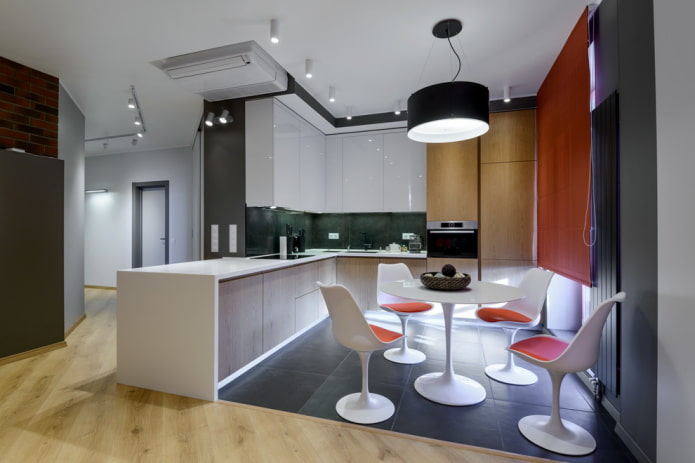
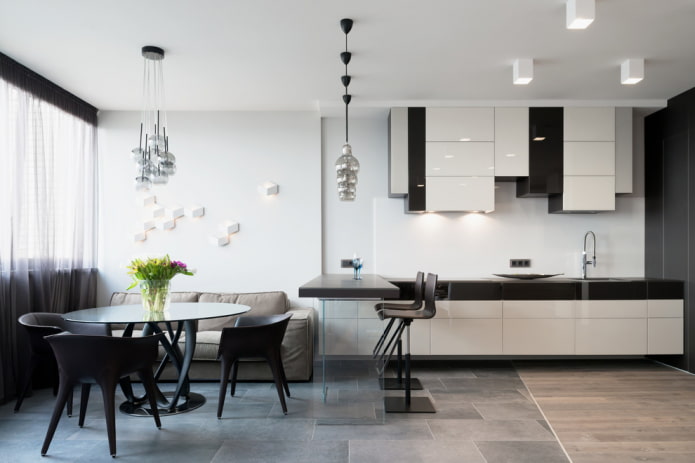

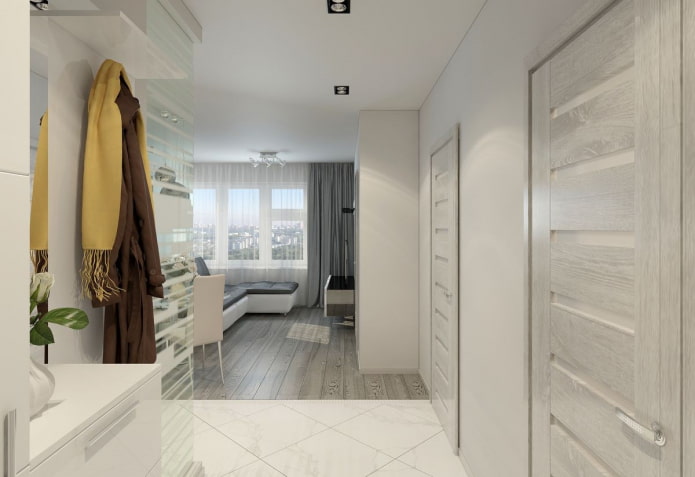
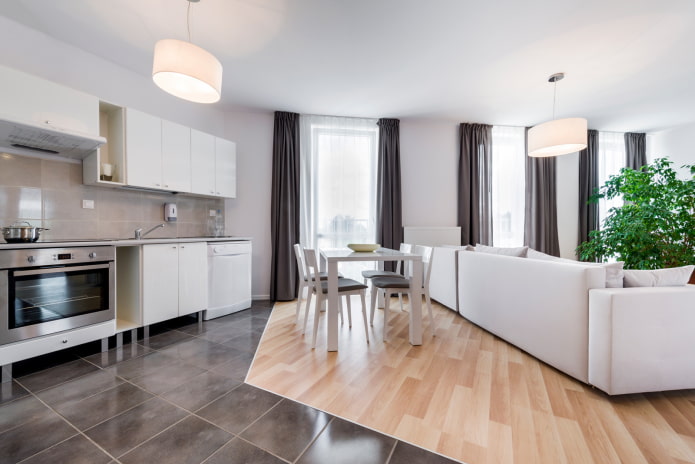
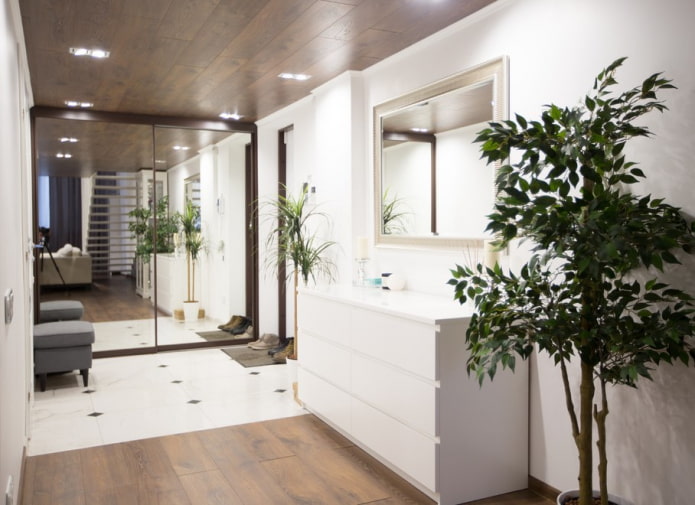
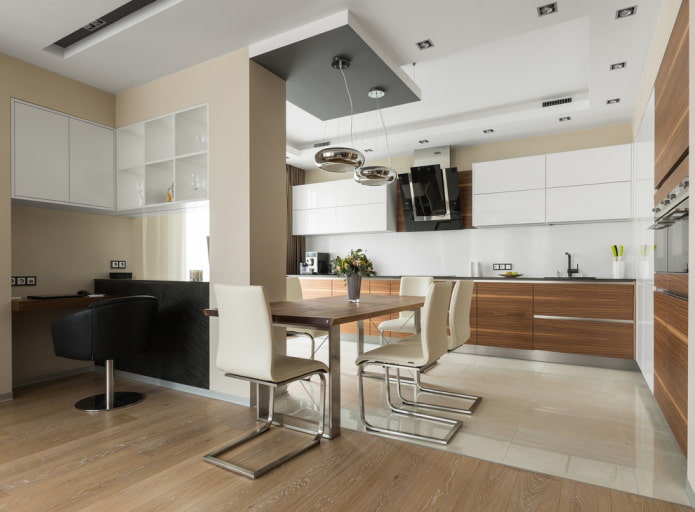
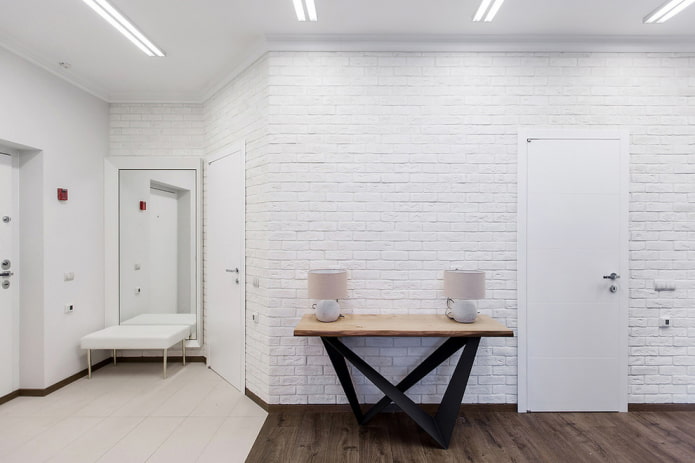

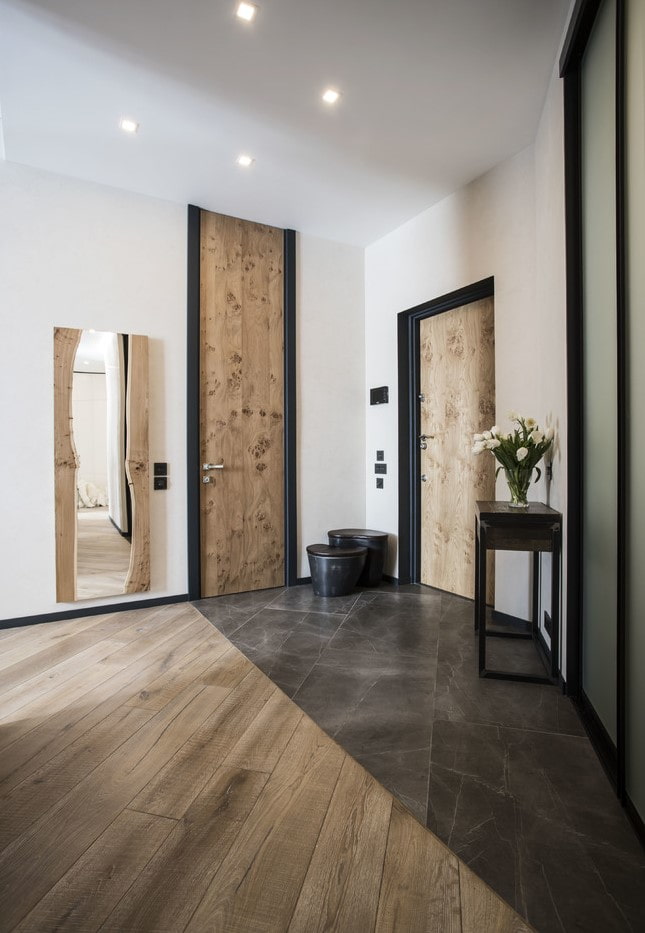

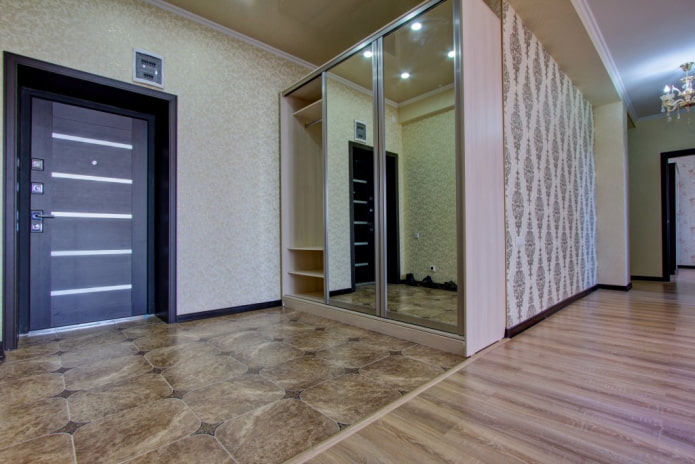

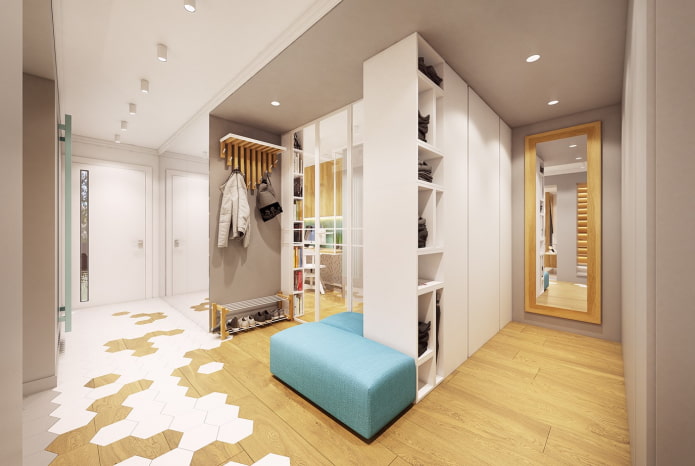
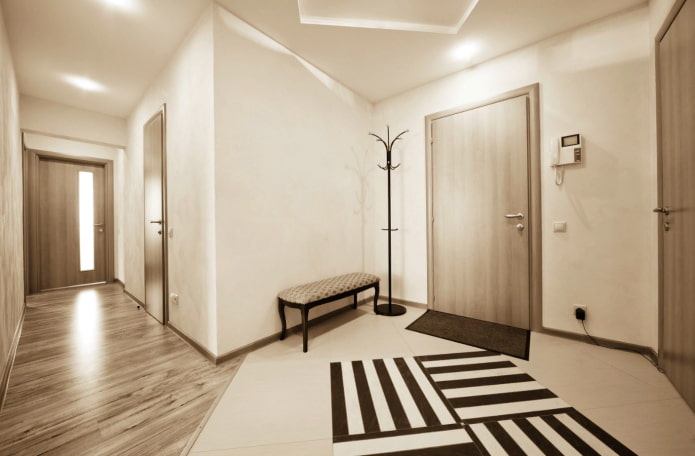
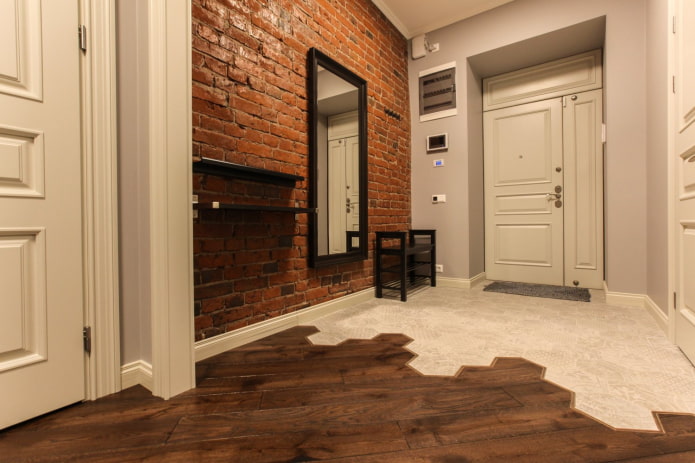

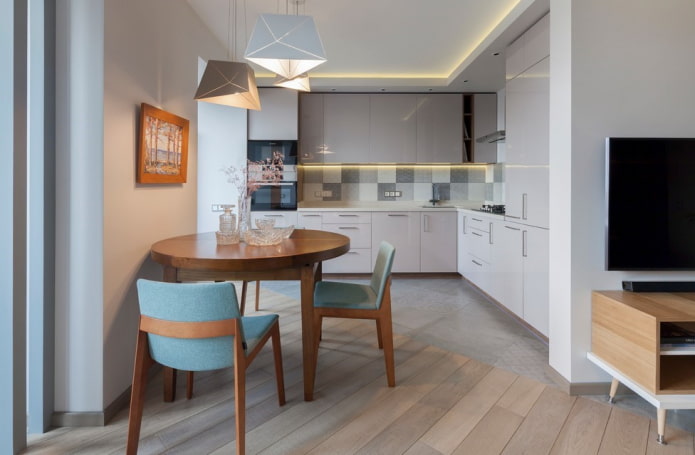
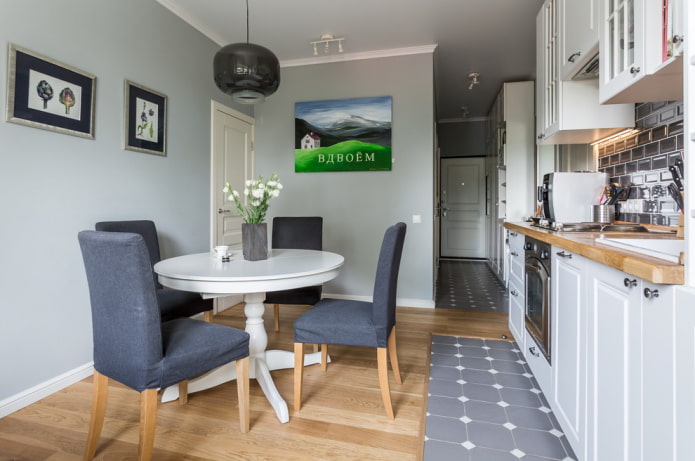

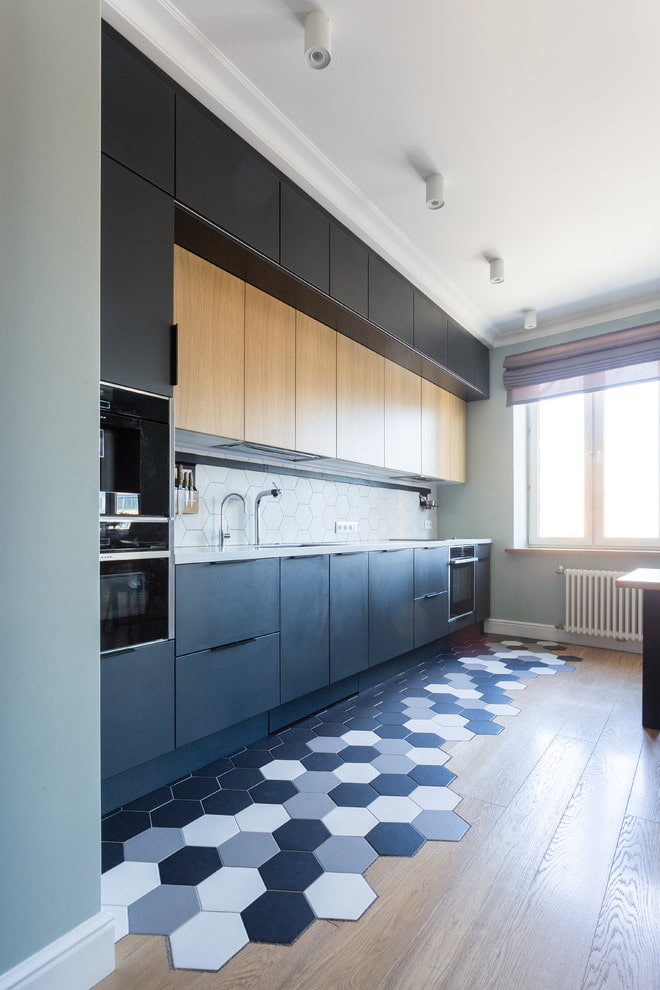
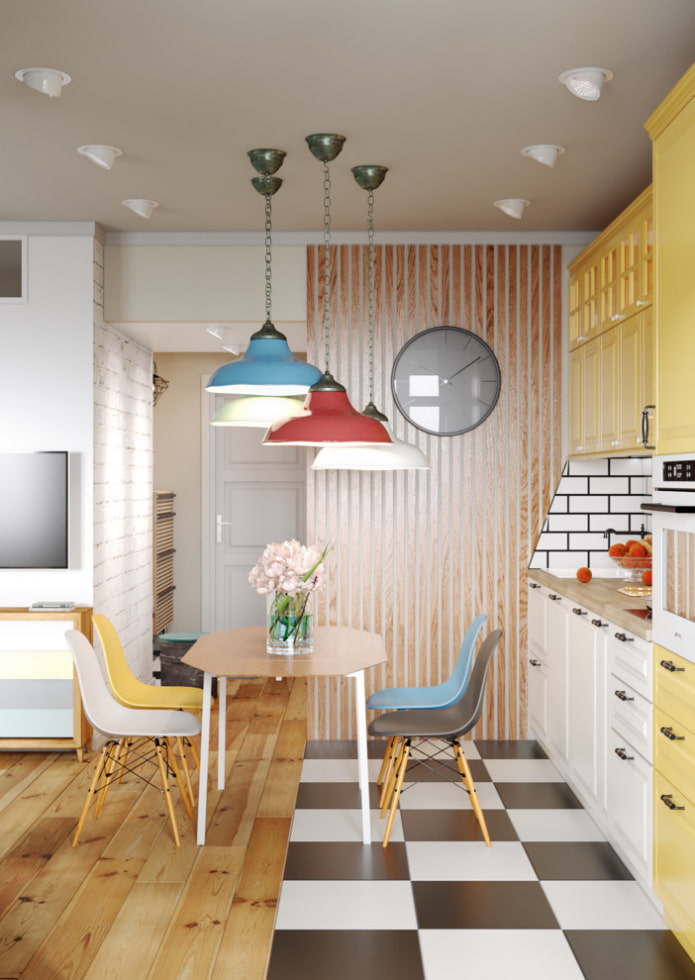

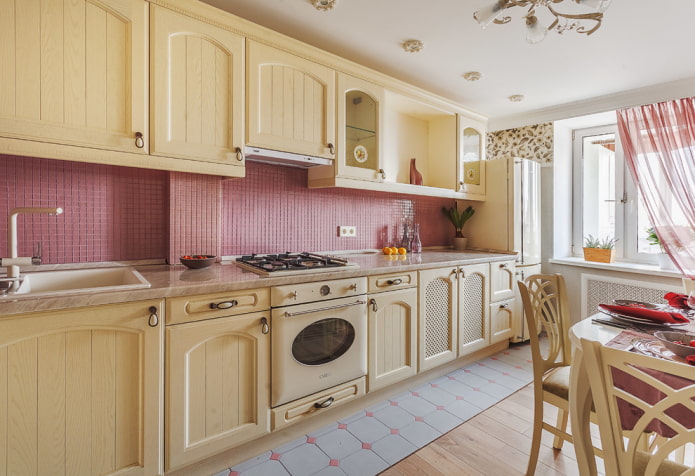
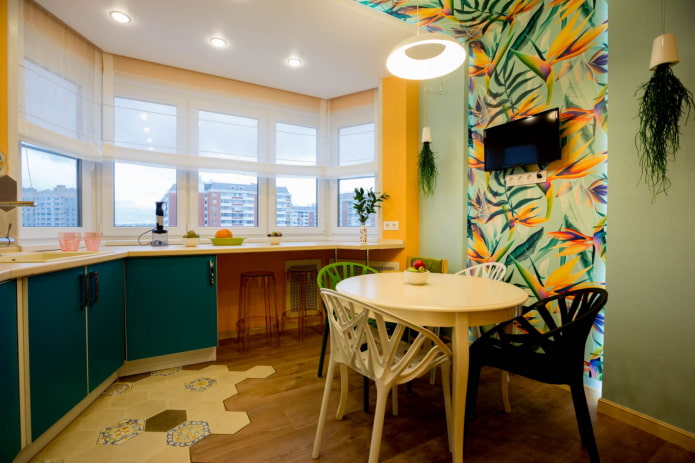
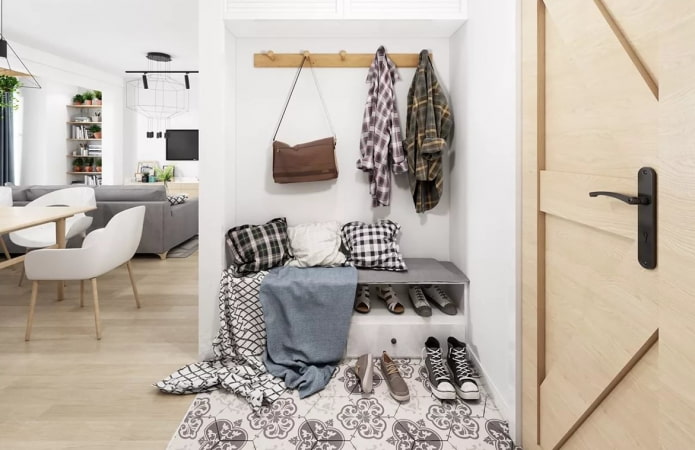
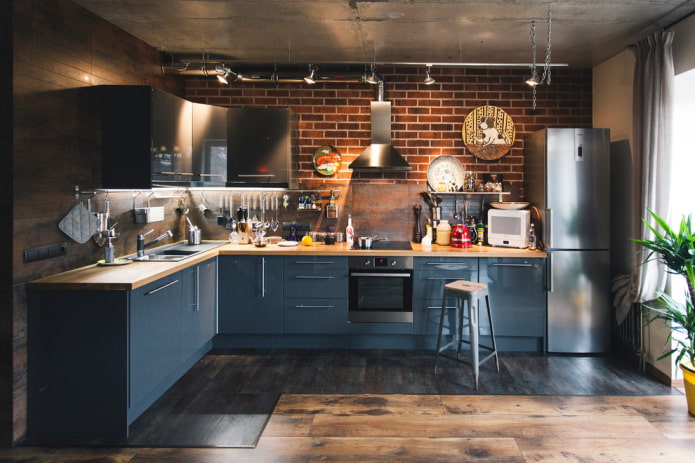
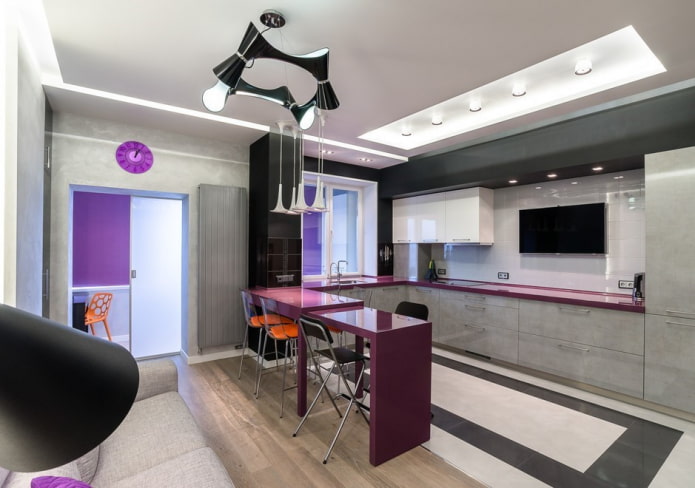
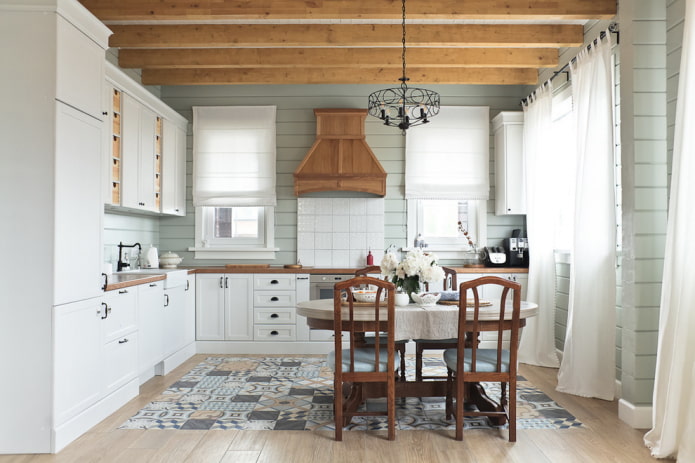

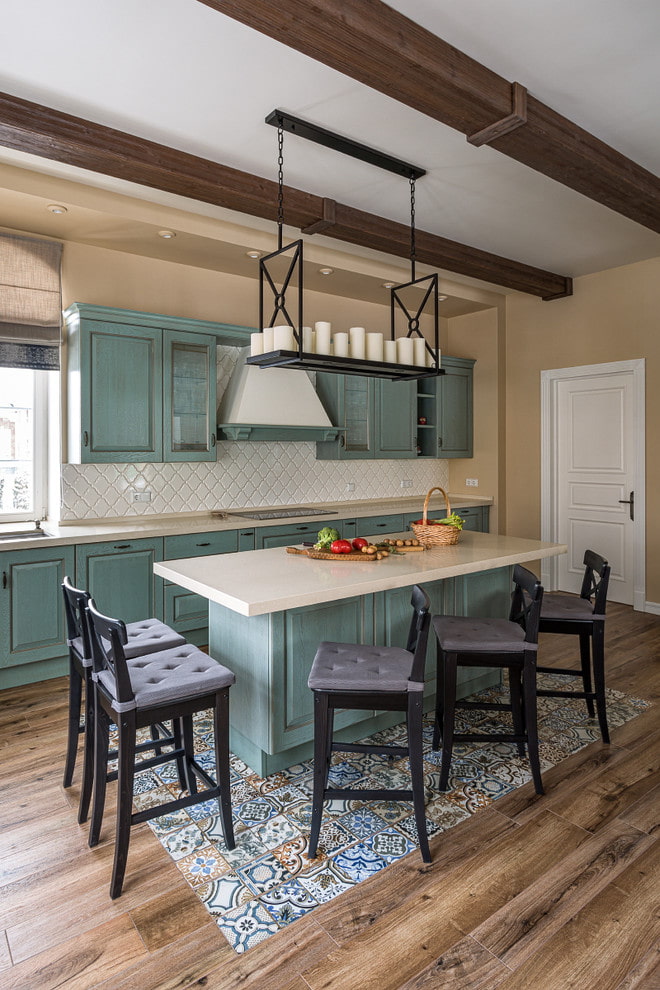

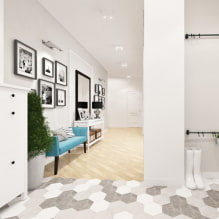


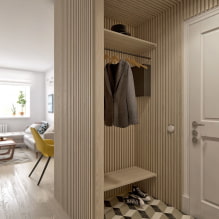
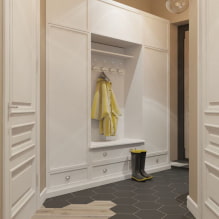
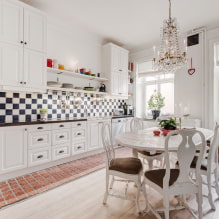
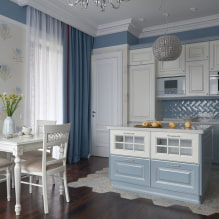
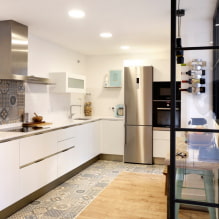

 Top 10 Trends in Interior Design 2020
Top 10 Trends in Interior Design 2020 Rating of cheap TVs with Smart-TV
Rating of cheap TVs with Smart-TV New Year's LED garlands on AliExpress - we disassemble while it's hot, so that the house is bright
New Year's LED garlands on AliExpress - we disassemble while it's hot, so that the house is bright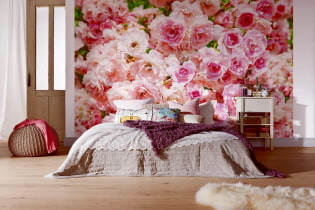 Wall mural with flowers in the interior: living wall decor in your apartment
Wall mural with flowers in the interior: living wall decor in your apartment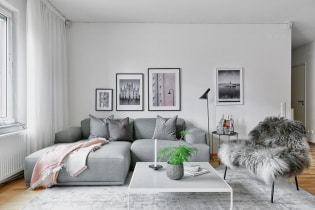 Gray sofa in the interior: views, photos, design, combination with wallpaper, curtains, decor
Gray sofa in the interior: views, photos, design, combination with wallpaper, curtains, decor Interior in peach tones: meaning, combination, choice of finishes, furniture, curtains and decor
Interior in peach tones: meaning, combination, choice of finishes, furniture, curtains and decor